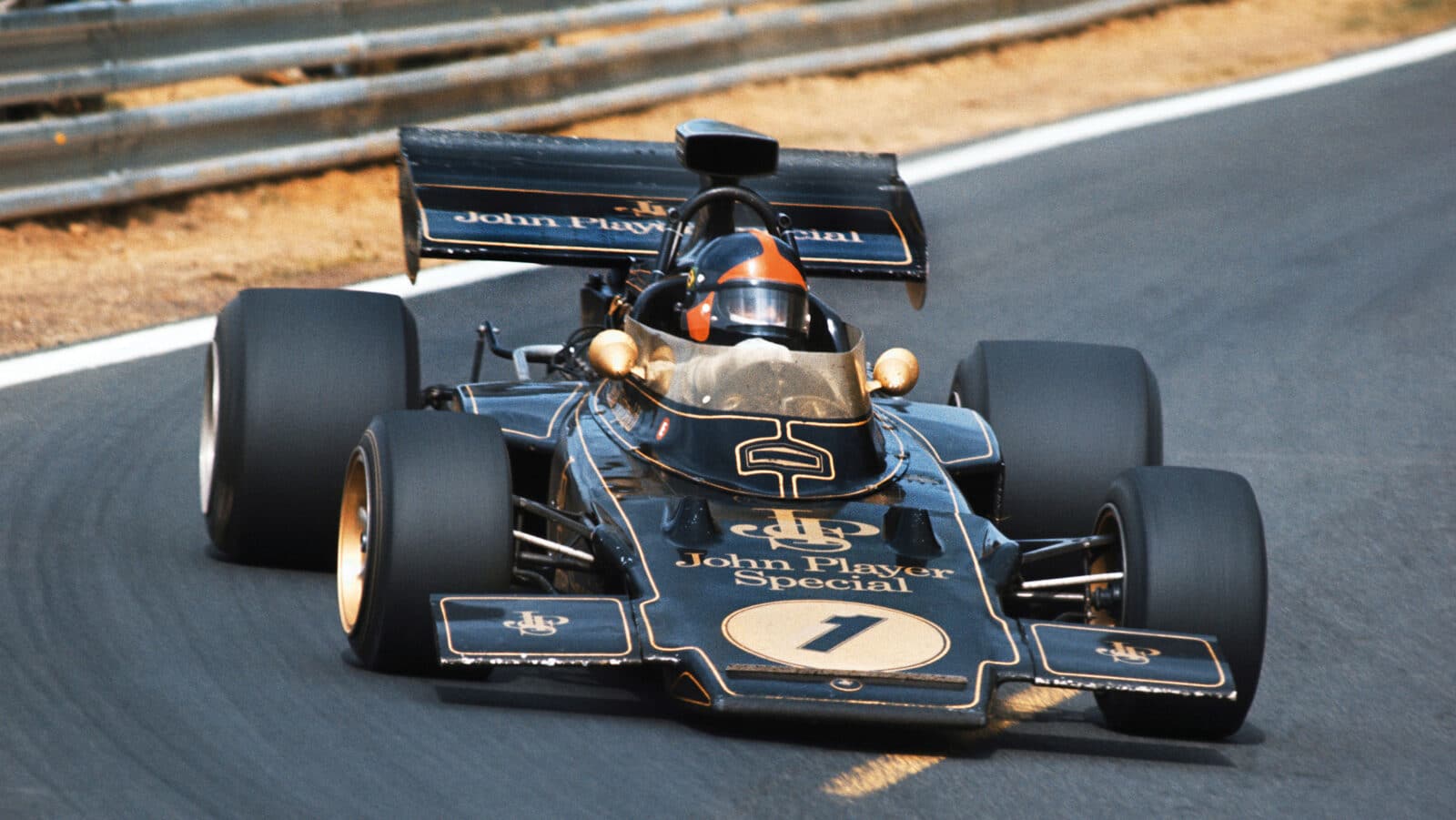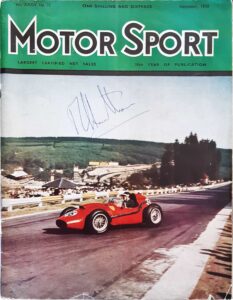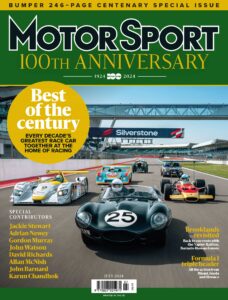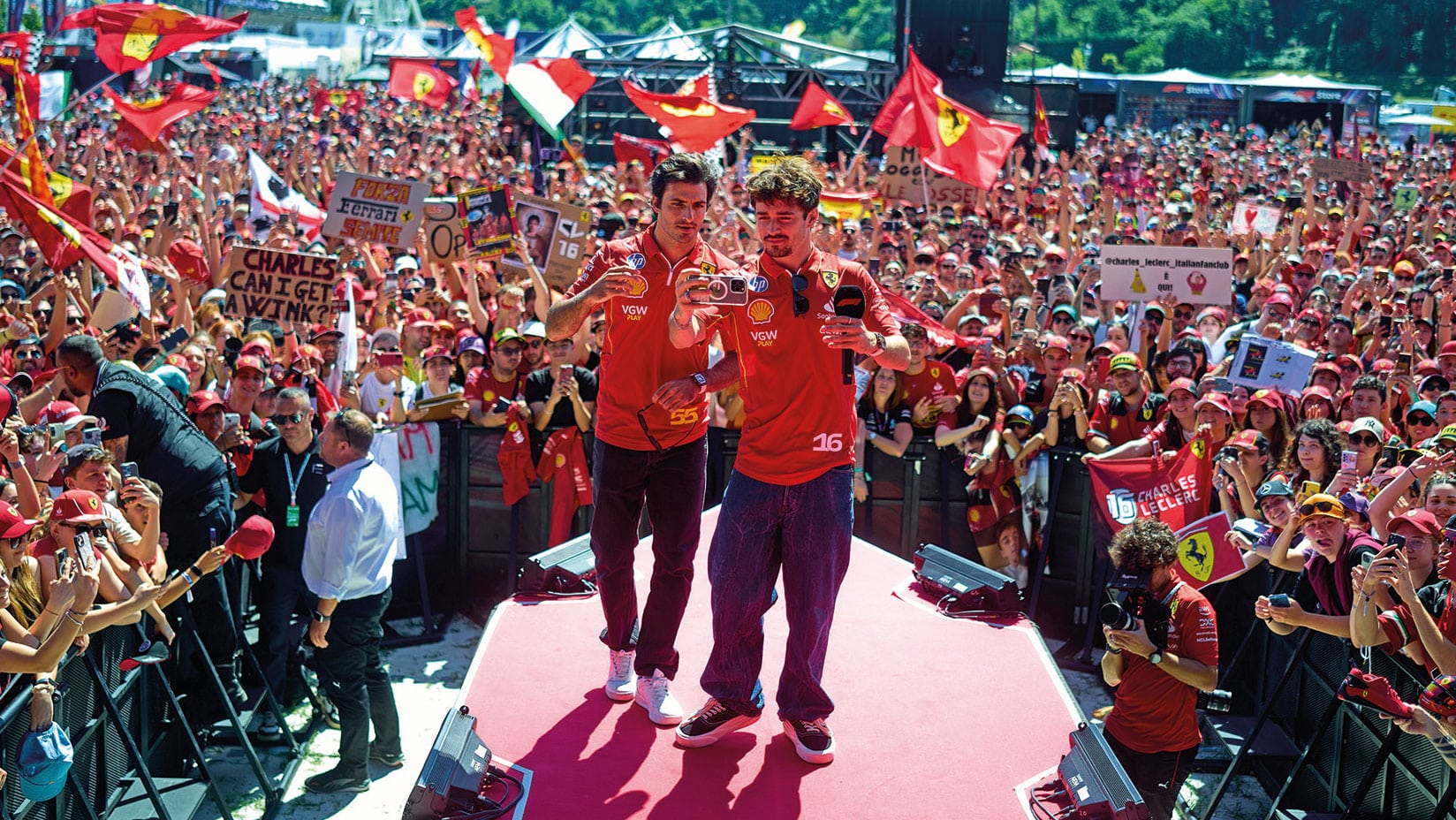Letters - August 2024

Emerson Fittipaldi at the 1972 French GP in his Lotus 72 – an era defining F1 car
Grand Prix Photo
From David Wesley Tee, Production Manager of Motor Sport when owned by his father, Wesley J Tee.
Congratulations to the editor and all the Motor Sport staff for what I believe is a truly amazing achievement [Motor Sport 100th anniversary]. I wish you well for the celebration and more importantly for the future of the best magazine in the world.
Mr Boddy (WB) was contributing copy to Motor Sport in 1934 when my father Wesley Tee became the printer of the magazine and then in December 1936 bought the title from the wealthy Brooklands racing driver TG Moore, thus becoming both owner and publisher. WB and my father successfully worked together producing Motor Sport each month for 60 years, even during the World War II bombing of London and shortage of printers’ paper, until my father’s death in August 1996. Of course no one must forget the formidable Denis Jenkinson, ‘Jenks’, who for much of that time was our continental correspondent covering all the international races in Europe.
In the summer of 1949, when our family were on their annual summer holidays at Frinton-on-Sea, my father, who joined us for long weekends during August, brought down the latest issue which was the special Silver Jubilee issue. Dad was so pleased to read a letter from TG Moore, the previous owner who had also been chairman and editor from 1929 to 1936. I was then 12, and from then on Motor Sport became part of my life. In August 1958 I joined the family printers, Tee & Whiten of City Road, London EC1, that typeset all WB’s typed copy with its hand-written balloon additions and all Jenks’s long-hand copy. These were turned into galley proofs by the old letterpress system that endured until 1978 when the company moved to Standard House, Bonhill Street.

Let me tell of my 38-year involvement at Motor Sport with the aid of five issues.
Issue one: in November 1958 we planned a colour cover to celebrate the first Englishman to be world champion – but would it be Mike Hawthorn or Stirling Moss? A problem, as the date of the final GP was October 19, with copy deadline on the 20th and copies on sale on November 1. I was on duty at our Motor Show stand with early copies as new champion Hawthorn visited the stand to meet WB. He stayed an hour chatting and being photographed reading Motor Sport in front of the Brooklands Memorial Trophy that we presented to him in 1951 as that year’s most-promising driver. The copy signed by Hawthorn that day is a treasured possession.
Issue two: December 1967, with new 1967 world champion Denis Hulme on the cover. He came to our offices as the high-profile guest to present the Motor Sport petition of nearly 300,000 signatures against the new 70mph speed limit. I drove him and my father to a restaurant in The Strand before presenting the petition to the minister of transport. Denis Hulme signed the cover of this Motor Sport.
Issue three: November 1968 reached the peak print run of 168,000 consisting of 96 pages of black and white, 16 pages of colour centre spread and four-page colour cover. All copy was set by our own monotype operators, printed on our letterpress machines, folded, collated, wire stitched and trimmed by Tee & Whiten printers and distributed by Tee & Whiten distributors. I was told this number of letterpress pages and this print run was a record in the UK in 1968.
Issue four: August 1975, the Golden Jubilee issue of 160 pages with a 32-page colour centre spread that included an article by Stirling Moss driving seven racing cars from 1925 to 1975. A big issue that gave us a surge in circulation.
Issue five: October 1985 included a Diamond Jubilee 1925 to 1985 supplement. I remember it because the supplement was in black and white, and there seemed little to celebrate. The circulation of Motor Sport had fallen to 80,000.
With the death of my father in August 1996 the sale of his publications was inevitable and my last production of Motor Sport was the November 1996 issue, exactly 38 wonderful years after my Mike Hawthorn issue.
Now, 28 years later and at the age of 86, I wish all involved in Motor Sport magazine today the very best as it celebrates 100 magnificent years. My thanks for taking care of such a precious part of the sport we all love so much.
David Wesley Tee, little warley, essex

The 100th Anniversary issue arrived today in the post and I have spent the past four hours enjoying it. I started reading Motor Sport in 1967 when seven years old after being taken to see Jim Clark win the British Grand Prix in the beautiful Lotus 49. I struggled to develop any reading skills so my mum and dad would read me the articles and race reports, until they decided enough was enough and I would have to learn to read myself. That gave me the incentive and in a couple of months I could enjoy DSJ, WB and the rest with a dictionary beside me to help with any tricky words. Thanks to Motor Sport my vocabulary expanded and a joy of reading began, subsequently developed to the extent that I became an English teacher. I have also competed in motor sport for 42 years and counting… all thanks to your magazine.
Andrew Till, Melksham, Wiltshire
Thank you for the latest, anniversary edition of Motor Sport, which landed on my doormat with a resounding thud. I’m working my way through it.
Congratulations to the teams that have made the magazine such a fantastic read since 1924. You’ve done a grand job and continue to do so. I’ve been a regular since 1959 when I started watching the sport, my first event being the Whit Monday meeting at Crystal Palace. I was 14 and had taken the train from Leigh-on-Sea to Fenchurch Street, walked to London Bridge and bought my ticket to Crystal Palace.
The photograph of Jenks standing on his bike at Brands Hatch in ’64 must have been taken very close to where my friend Steve and I were standing out on the long circuit. Jenks arrived, we’d had a brief chat, we watched some more of the GP practice and then he left with a cheery wave.
Keep up the good work. I hope to continue to enjoy your fine words for many years to come.
John Hillier, Tilehurst, Berkshire
I was slightly surprised at the choice of the 49 [Century of racing, Race Car of the Century shortlist, July] over what I consider to be the most iconic Lotus, the 72. I recall being in my first year of grammar school having picked up a copy of Motor Sport that morning. Sitting at my desk I was drooling over what I considered to be the most beautiful Formula 1 car I had ever seen before being rebuked by my teacher for not paying attention. The magazine’s colour images of the 72 in Gold Leaf colours adorned my bedroom wall for months.
The Lotus 72 had all the attributes of the 49 while adopting such a unique design layout that it influenced all F1 car design, and continues to do so. Apart from the model’s longevity and subsequent iterations, for the latter reason alone, surely the 72 should take precedence over the racing cars of that period?
Anniversary congratulations and thank you for your continued excellence in producing such an informative and entertaining publication of which I have been a reader for many years since school.
Paul Marsh, Glossop, Derbyshire
Congratulations on your 100 years – I have been a regular reader for about the last 40. It seems to me that the future of F1 is not electric nor hybrid but as a sustainable fuel formula. We could have lovely noisy V8/10/12 engines again with the road car-relevant development of zero emission non-fossil fuels. The big manufacturers would surely be interested, especially since EV road cars are apparently getting harder to sell. Formula E is doing a fantastic job developing electric car technology and the racing is close and very fast, while the WEC is doing a stunning job at developing hybrid motor technology and creating really exiting long-distance racing.

Thus we could have the three pinnacles of motor sport – Formula E, electric; WEC, hybrid/experimental; F1, non-fossil fuel ICEs – all complementing each other and all contributing to reversing the ruination of the planet while all we motor sport-heads continue to have our fun. So please, FIA, get rid of heavy hybrid motors/batteries altogether in F1 from 2026 and return to loud ICEs running on sustainably derived fuel.
David Lovegrove, Stroud, Glos
David Tremayne’s Senna 30 years feature [Senna, May] made for poignant reading, on my way to Imola for 2024’s grand prix. Being there 30 years on was moving. Walking down the calm Santerno river, past the sad sites of history at Tamburello and Villeneuve, by leafy trees and rolling hills, the thought occurred – how can somewhere where such awful things happened be so beguilingly pleasant? Then Vettel emerged in the McLaren MP4/8, subject of your The Underdog feature. He ended by unfurling Brazilian and Austrian flags – at that point tears started to flow!
In amongst the emotion, the modern day delivered. If you think 2024 cars are on rails, try watching them at Rivazza 2! Lurid angles on the exit kerb were common, some going through the gravel. The race was pulsating, Norris nearly catching Verstappen. Leclerc’s Ferrari podium was greeted with exultation!
The present day marched on with panache, while remembering the sad events of 1994.
Ben Harris, Belfast
Stuart Pringle, Silverstone MD, stated in the June issue [Keeping up with the Joneses], “We have removed part of the raised bank, but there were never many people who watched from this area anyway.”
Mr Pringle is referring to the start of the Maggotts-Beckett complex, arguably the best non-grandstand viewpoints at the circuit. The removal of most of the banking facility is a real loss to spectators at this part of the track where the cars are so much closer than in other areas.
James Thacker, Tanworth in Arden, Warks
I cannot understand why F1 drivers need to change their helmet designs so often. They are missing a unique opportunity. The lids of Hill, Stewart, Hunt, Prost and Senna, just to name a few, became iconic in the sport because they were instantly recognisable and identifiable with their personality. These days, going by helmet design, I’m not sure I could name half the field.
Mike Radocy, tennessee, USA
Am I the only one who enjoyed the Monaco Grand Prix? If you want to create an overtaking opportunity, then instead of turning left into the chicane when the cars exit the tunnel, the track could carry on straight down Avenue JF Kennedy then put in a hairpin bend at the end to lead on to Tabac. Avenue JF Kennedy is a straight road that has been raced on by ePrix cars so it is possible, and there is plenty of run-off as the road continues past the new hairpin. This would provide a flat-out blast from Portier.
Timothy Hadleigh, Cobham, Surrey
Contact Us
Write to Motor Sport, 18-20 Rosemont Road, London, NW3 6NE or email, [email protected]
